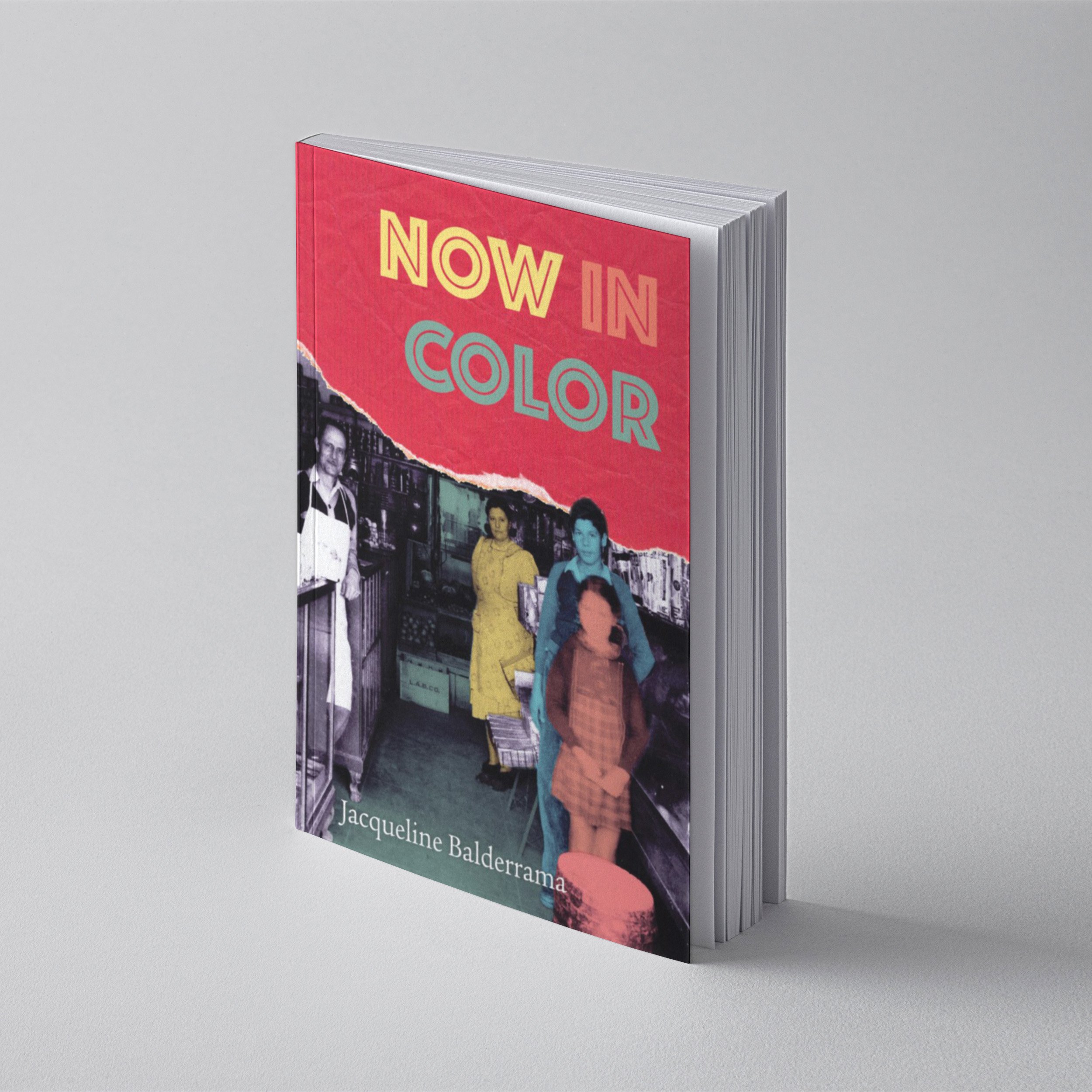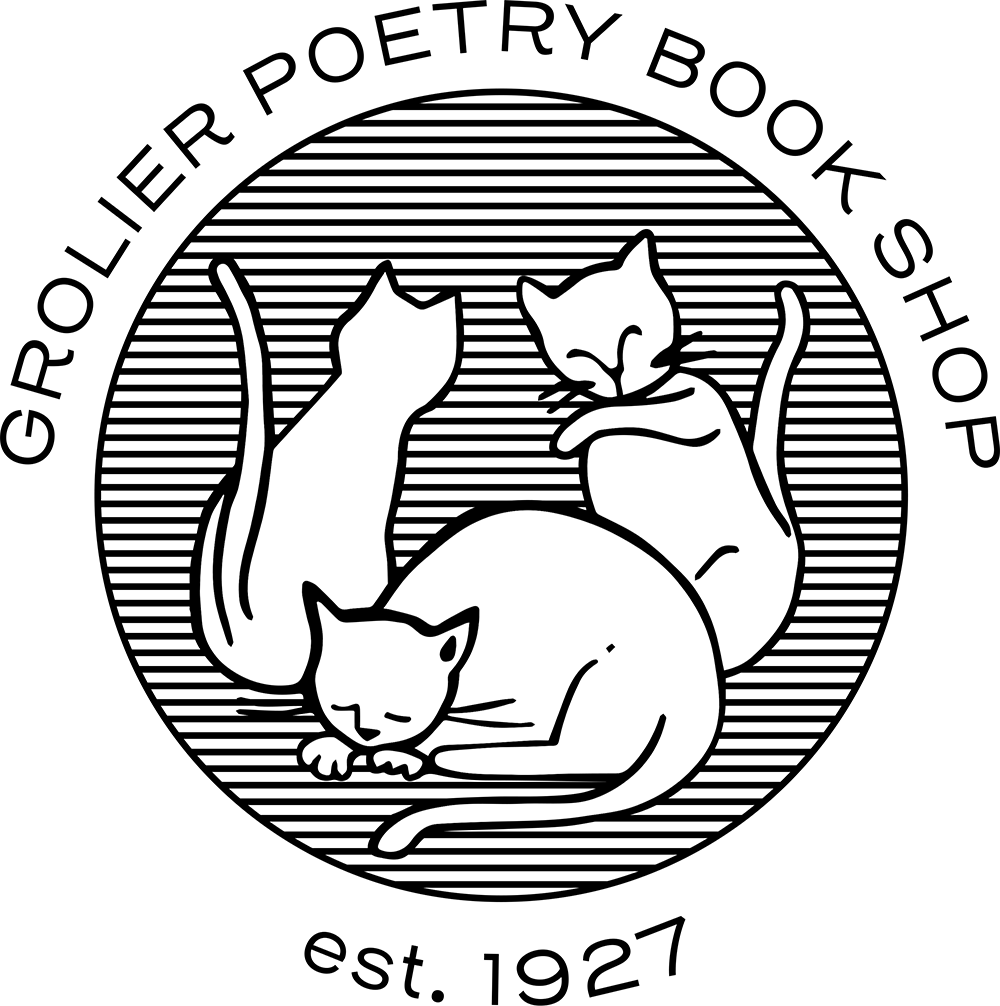 Image 1 of
Image 1 of

Now in Color by Jacqueline Balderrama
Now in Color explores the multigenerational immigrant experience of Mexican-Americans who have escaped violence, faced pressures to assimilate, and now seek to reconnect to a fragmented past. These poems illuminate the fluidity of language and of perception through both small hypocrisies and real atrocities. One of Balderrama’s strategies is to use the development of motion pictures and Technicolor as a lens through which to examine personal and cultural histories and stereotypes. She also considers bilingual expectations through an innovative series of Spanish definition poems. Balderrama documents pieces of her family’s oral tradition and draws connections to ongoing injustices experienced by current migrant families, offering a living picture of a present inevitably tied to and colored by its past. Through the poetics of witness, ekphrasis, portraiture, and family mythos, Now in Color deepens our understanding of hybrid identities and calls attention to those impacted by tensions along the U.S.-Mexico border.
Valentine to the Disappeared
Dearest, the hum of a hundred years
finds you in the divided flesh of an orange
tracing you back to northern Chihuahua.
Once-wealthy ancestors are now
a caricature of large heads and long legs. They say,
Even on horses, their feet dragged on the ground.
After the Revolution, you belonged
to fruit-pickers, grocers, motel owners.
Now there’s a judge, a professor, less Chihuahua.
Some of us have forgotten how to speak with those dead,
which means, a boy made to feel ashamed in his learning
the language will not learn. He cannot teach his daughters.
Now the feeling returns in me for not knowing the words.
I am told half of you means bucket (balde),
and the other means branch (rama): water for grafted trees.
I call you little name because you turn invisible
in new mouths, have been spoken by so many
you can’t be heard anymore.
Little name, as myself, I’ve always been ready
to send you away like a nutshell boat
weighted down by a pebble into dry streambeds.
It is like that with anything built
to be given.
For Jacqueline Balderrama, identity is an ‘accounted nothingness.’ It is an unrecovered reel of the two sides of Rita Hayworth: one, a long-name Hispanic, the other, a silver-screen ether. It is a Mobius double-sided ribbon of family remembrances, borderland maps, suffering treks across the blistering earth, and a text to ‘collect what is scattered.’ Enter Picasso’s circus scenes, Kahlo’s ripped chest dangling, Varo’s multi-dimensional floating woman, Monet’s crumbling fertile bridge, da Vinci’s moon ocean. This is the real-to-unreal figure, the lost movie, the outsider’s invitation to escape together into her Technicolor vortex of fractured meditations and, most of all, her art of becoming. Now in Color is wild and radical in form, iridescent in blood and genre.
—Juan Felipe Herrera, Poet Laureate of the United States
From the anguish of children held in border camps to movies whose Latino stars blur their identities, Jacqueline Balderrama’s Now in Color explores the ever-shifting landscapes of migration, identity, and perception. Working with language and family history, these poems trace the author’s heritage through stories of survival and the relentless pressure to assimilate.
—Erica Goss, Sticks & Stones
The tension created between life and art, stories made for movie screens and the chilling dose of actuality, is the strength of this collection. Balderrama recontextualizes these works of historical fiction, presenting them alongside their factual counterparts, to illustrate the humanity that is erased in translation.
—Neha Peri, Sundress Reads
Now in Color explores the multigenerational immigrant experience of Mexican-Americans who have escaped violence, faced pressures to assimilate, and now seek to reconnect to a fragmented past. These poems illuminate the fluidity of language and of perception through both small hypocrisies and real atrocities. One of Balderrama’s strategies is to use the development of motion pictures and Technicolor as a lens through which to examine personal and cultural histories and stereotypes. She also considers bilingual expectations through an innovative series of Spanish definition poems. Balderrama documents pieces of her family’s oral tradition and draws connections to ongoing injustices experienced by current migrant families, offering a living picture of a present inevitably tied to and colored by its past. Through the poetics of witness, ekphrasis, portraiture, and family mythos, Now in Color deepens our understanding of hybrid identities and calls attention to those impacted by tensions along the U.S.-Mexico border.
Valentine to the Disappeared
Dearest, the hum of a hundred years
finds you in the divided flesh of an orange
tracing you back to northern Chihuahua.
Once-wealthy ancestors are now
a caricature of large heads and long legs. They say,
Even on horses, their feet dragged on the ground.
After the Revolution, you belonged
to fruit-pickers, grocers, motel owners.
Now there’s a judge, a professor, less Chihuahua.
Some of us have forgotten how to speak with those dead,
which means, a boy made to feel ashamed in his learning
the language will not learn. He cannot teach his daughters.
Now the feeling returns in me for not knowing the words.
I am told half of you means bucket (balde),
and the other means branch (rama): water for grafted trees.
I call you little name because you turn invisible
in new mouths, have been spoken by so many
you can’t be heard anymore.
Little name, as myself, I’ve always been ready
to send you away like a nutshell boat
weighted down by a pebble into dry streambeds.
It is like that with anything built
to be given.
For Jacqueline Balderrama, identity is an ‘accounted nothingness.’ It is an unrecovered reel of the two sides of Rita Hayworth: one, a long-name Hispanic, the other, a silver-screen ether. It is a Mobius double-sided ribbon of family remembrances, borderland maps, suffering treks across the blistering earth, and a text to ‘collect what is scattered.’ Enter Picasso’s circus scenes, Kahlo’s ripped chest dangling, Varo’s multi-dimensional floating woman, Monet’s crumbling fertile bridge, da Vinci’s moon ocean. This is the real-to-unreal figure, the lost movie, the outsider’s invitation to escape together into her Technicolor vortex of fractured meditations and, most of all, her art of becoming. Now in Color is wild and radical in form, iridescent in blood and genre.
—Juan Felipe Herrera, Poet Laureate of the United States
From the anguish of children held in border camps to movies whose Latino stars blur their identities, Jacqueline Balderrama’s Now in Color explores the ever-shifting landscapes of migration, identity, and perception. Working with language and family history, these poems trace the author’s heritage through stories of survival and the relentless pressure to assimilate.
—Erica Goss, Sticks & Stones
The tension created between life and art, stories made for movie screens and the chilling dose of actuality, is the strength of this collection. Balderrama recontextualizes these works of historical fiction, presenting them alongside their factual counterparts, to illustrate the humanity that is erased in translation.
—Neha Peri, Sundress Reads
Now in Color explores the multigenerational immigrant experience of Mexican-Americans who have escaped violence, faced pressures to assimilate, and now seek to reconnect to a fragmented past. These poems illuminate the fluidity of language and of perception through both small hypocrisies and real atrocities. One of Balderrama’s strategies is to use the development of motion pictures and Technicolor as a lens through which to examine personal and cultural histories and stereotypes. She also considers bilingual expectations through an innovative series of Spanish definition poems. Balderrama documents pieces of her family’s oral tradition and draws connections to ongoing injustices experienced by current migrant families, offering a living picture of a present inevitably tied to and colored by its past. Through the poetics of witness, ekphrasis, portraiture, and family mythos, Now in Color deepens our understanding of hybrid identities and calls attention to those impacted by tensions along the U.S.-Mexico border.
Valentine to the Disappeared
Dearest, the hum of a hundred years
finds you in the divided flesh of an orange
tracing you back to northern Chihuahua.
Once-wealthy ancestors are now
a caricature of large heads and long legs. They say,
Even on horses, their feet dragged on the ground.
After the Revolution, you belonged
to fruit-pickers, grocers, motel owners.
Now there’s a judge, a professor, less Chihuahua.
Some of us have forgotten how to speak with those dead,
which means, a boy made to feel ashamed in his learning
the language will not learn. He cannot teach his daughters.
Now the feeling returns in me for not knowing the words.
I am told half of you means bucket (balde),
and the other means branch (rama): water for grafted trees.
I call you little name because you turn invisible
in new mouths, have been spoken by so many
you can’t be heard anymore.
Little name, as myself, I’ve always been ready
to send you away like a nutshell boat
weighted down by a pebble into dry streambeds.
It is like that with anything built
to be given.
For Jacqueline Balderrama, identity is an ‘accounted nothingness.’ It is an unrecovered reel of the two sides of Rita Hayworth: one, a long-name Hispanic, the other, a silver-screen ether. It is a Mobius double-sided ribbon of family remembrances, borderland maps, suffering treks across the blistering earth, and a text to ‘collect what is scattered.’ Enter Picasso’s circus scenes, Kahlo’s ripped chest dangling, Varo’s multi-dimensional floating woman, Monet’s crumbling fertile bridge, da Vinci’s moon ocean. This is the real-to-unreal figure, the lost movie, the outsider’s invitation to escape together into her Technicolor vortex of fractured meditations and, most of all, her art of becoming. Now in Color is wild and radical in form, iridescent in blood and genre.
—Juan Felipe Herrera, Poet Laureate of the United States
From the anguish of children held in border camps to movies whose Latino stars blur their identities, Jacqueline Balderrama’s Now in Color explores the ever-shifting landscapes of migration, identity, and perception. Working with language and family history, these poems trace the author’s heritage through stories of survival and the relentless pressure to assimilate.
—Erica Goss, Sticks & Stones
The tension created between life and art, stories made for movie screens and the chilling dose of actuality, is the strength of this collection. Balderrama recontextualizes these works of historical fiction, presenting them alongside their factual counterparts, to illustrate the humanity that is erased in translation.
—Neha Peri, Sundress Reads
